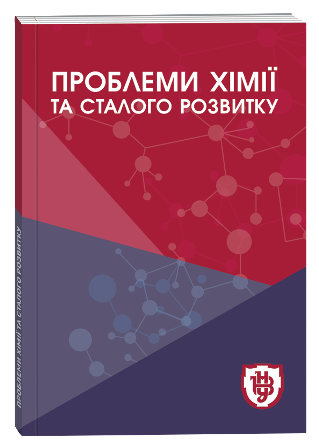THE INFLUENCE OF POLYETHYLENE GLYCOL MODIFIERS ON THE DISTRIBUTION OF CARBON NANOTUBES IN THE POLYMER MATRIX
DOI:
https://doi.org/10.32782/pcsd-2022-2-6Keywords:
carbon nanotubes, non-covalent modification, polyethylene glycol, microstructure, fractal dimension.Abstract
In polymer nanocomposites filled with carbon nanotubes (CNTs), it is very difficult to ensure the uniformity of the distribution of nanotubes in the polymer matrix, as well as the stability of this dispersion over time. Therefore, in such systems, over time, due to the strong van der Waals forces of attraction between individual nanotubes, the aggregation of filler particles takes place, which leads to the transition from the nano to the micro level of their structural organization. Such a transition negatively affects the set of functional properties of polymer nanocomposites filled with CNTs. Therefore, the development of new approaches to the stabilization of nanoparticles in order to prevent their aggregation for the creation of nanocomposite materials with improved functional characteristics is an urgent task. The paper studied the effect of non-covalent modification of carbon nanotubes using polyethylene glycol (PEG) of different molecular weight on the degree of their distribution in the polymer matrix. The peculiarities of the distribution of CNTs of various types: unmodified and non-covalently modified, using different molecules of PEG, nanotubes were studied. From the analysis of microscopic images, it was found that modified CNTs are more evenly distributed in the polymer matrix than unmodified nanotubes, which can be explained by the different nature of the interaction between the polymer matrix and CNTs. It was determined that for systems containing modified CNTs, a higher value of the fractal dimension is observed, which indicates the formation of looser CNT aggregates, while unmodified CNTs show a tendency to form denser aggregates. It was found that the value of the fractal dimension for functionalized CNTs is close to 3, which indicates a uniform distribution of CNTs. It was established that the modifier based on PEG-10000 exerts the highest stabilizing effect. At the same time, CNTs are most evenly distributed throughout the volume of the material.
References
Shoukat R., Khan M.I. Carbon nanotubes: a review on properties, synthesis methods and applications in micro and nanotechnology. Microsyst. Technol. 2021. Vol. 27. P. 4183–4192.
Iqbal A., Saeed A., Ul-Hamid A. A review featuring the fundamentals and advancements of polymer/CNT nanocomposite application in aerospace industry. Polym. Bull. 2021. Vol. 78. P. 539–557.
Baowan D., Ruengrot P., Hill J.M., Bacsa W. The effect of non-covalent functionalization on the interaction energy of carbon nanotubes. J. Phys. Commun. 2019. Vol. 3. P. 035018.
Vaisman L., Marom G., Wagner H.D. Dispersions of surface-modified carbon nanotubes in water-soluble and waterinsoluble polymers. Advanced Functional Materials. 2006. Vol. 16. Р. 357–363.
Nuriel S., Liu L., Barber A.H., Wagner H.D. Direct measurement of multiwall nanotube surface tension. Chemical Physics Letters. 2005. Vol. 404. Р. 263–266.
Kubota S., Maruyama T., Nishikiori H., Tanaka N., Endo M., Fujii T. Spectroscopic evaluation of the length of poly(ethylene glycol) covalently attached to multiwalled carbon nanotubes. Chemistry Letters. 2009. Vol. 38. Р. 890–891.
Wen Y., Wu H., Chen S., Lu Y., Shen H., Jia N. Direct electrochemistry and electrocatalysis of hemoglobin immobilized in poly(ethylene glycol) grafted multi-walled carbon nanotubes. Electrochimica Acta. 2009. Vol. 54. Р. 7078–7084.
Klepko V.V., Lysenkov E.A. Features of percolation transition in systems on the basis of oligoglycols and carbon nanotubes. Ukrainian Journal of Physics. 2015. Vol. 60 (9). P. 944–949.
Lysenkov E.A., Klepko V.V., Yakovlev Yu.V. Influence of the Filler’s Size on the Percolation Behavior in the Polyethylene Glycol/Carbon Nanotubes System. Journal of Nano- and Electronic Physics. 2015. Vol. 7 (1). P. 01031.
Feder J. Fractals. Springer: Science & Business Media. 2013. 284 p.
Лисенков Е.А., Стрюцький О.В., Бохван С.І., Клепко В.В. Вплив кінцевих гідроксильних груп на перколяційну поведінку систем на основі олігоетиленгліколю та вуглецевих нанотрубок. Полімерний журнал. 2017. Т. 39, № 2. С. 75–82.
Яковлев Ю.В., Клепко В.В., Лисенков Е.А. Особливості перколяційної поведінки в системі ПЕГ400/КНТ: вплив режимів змішування. Полімерний журнал. 2014. Т. 36, № 1. С. 53–56.







